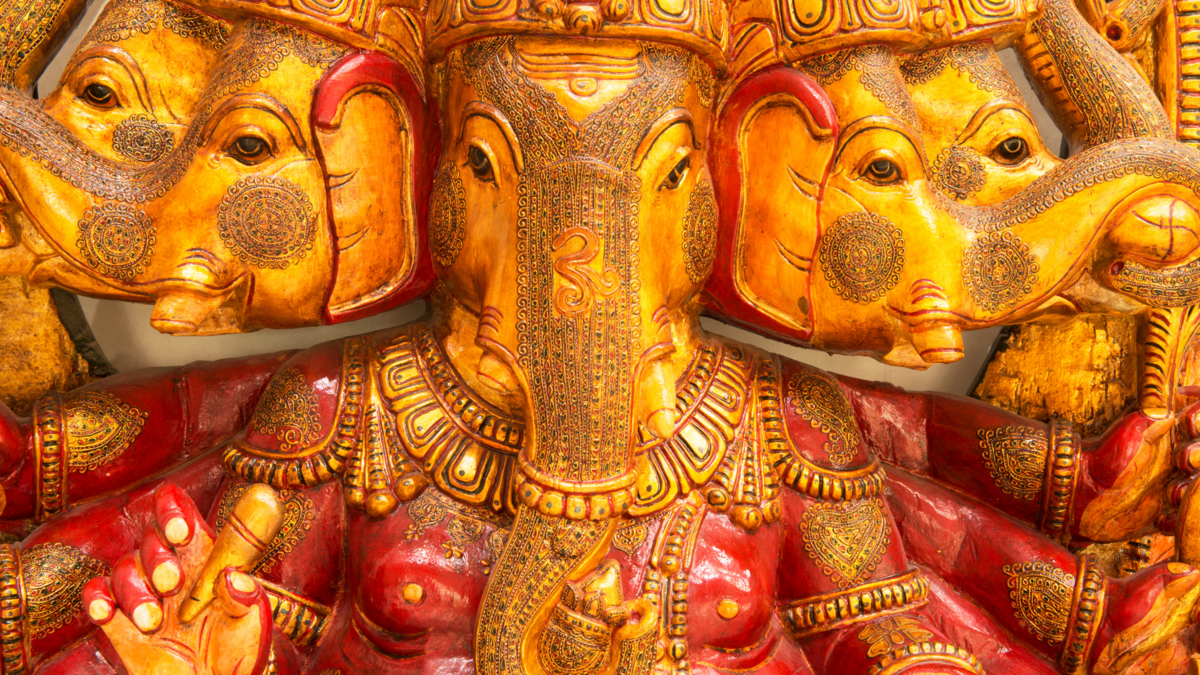Table of contents
General information about the major world religions

From Christianity to Zoroastrianism, we can understand what each of these major religions means culturally to their devotees. In addition, it is important to emphasize that there is a need to respect all of them. One way to build respect within is by understanding and knowing complexity.
So, it is born together with empathy to generate love for difference. Even today, it is possible to see that a large part of society gets into conflict over religious issues. All of them develop from factors such as politics, geopolitics, economics, etc. Below, read the article to understand about the various religions that exist around the world.
What is religion, how many there are and their origins

To speak exactly about what a religion is, it is possible to consider that the main ones are defined according to tendencies of a certain group. One cannot give priority only to individual principles, because each one has its specific notions.
There are about 60,000 religions in the world, so the meaning of the word is "religar". It comes from Latin and they are all understood as a collection of beliefs that people consider as the existence of the divine.
There are no official records about the beginning of religions or when beliefs began to emerge. In prehistory some were born and they gave the initial step for what human beings take as devotion. Continue reading the article to understand what a religion is, how many there are and what their beginnings are.
What is considered religion
Within a religion, some essential rules and values are defined for the pursuit of faith. All are established according to beliefs that result in devotion. In this, they make a connection between what is human and spiritual. Moreover, all seek to give meaning to life.
Explaining the origin of the universe, world and things, each person takes into consideration what they carry as a principle. Therefore, a certain group of people need to maintain a behavior aimed at organization and hierarchy.
How many religions are there
There are about 60,000 religions around the world. The vast majority of them focus on belief in a spiritual and higher plane. Therefore, they also talk about life after death. It is possible to find around the world several places that have specific spaces to preach the faith.
All these various religions around the world are important in defining a culture. Obviously, there are those that have a greater number of believers and are the best known. Therefore, it is also possible to understand that with globalization this number can multiply.
The beginnings of religion
When the process of writing and history began, in this same period it was possible to identify the existence of some religions. In the year 3000 before Christ documents about beliefs, rites and myths were found, but the traces of religions in the early days do not count with true recognition, besides the writing process not being so developed.
The beginning of humanity, in prehistory, took place around two or three million years, until the period of 3000 B.C. Therefore, the only knowledge is focused on the word and imitative behavior.
The major religions of the world

Among the major doctrines that human beings believe, the number of believers can determine the size and importance of each. Thus, it is necessary to mention that Christianity, Islam, Hinduism, Buddhism, Spiritualism, Judaism and Atheism are the most popular.
There are data that provide surveys and reports that point the number of adherents of each religion, also talking about the determining countries. Christianity, for example, has about 2 billion adherents; Following the order, Islam has 1 billion and 600 million practitioners; Hinduism in turn, 1 billion; Buddhism has between 400 and 500 million.
Countries and regions that are informal do not have data like this, because it is difficult to estimate in the face of questions that are complex to do so. Continue reading the article to learn more about the specifics of each religion.
Christianity
Considered the main and largest religion in the world, Christianity has a good part of its followers in Europe, Oceania and America. The purpose was given from Jesus of Nazareth, who is referred to by many as the savior. Being an Abrahamic religion, it is in the same group as Islam and Judaism.
The faithful are called "Christians" because this term was first used in Antioch, which was a Greek military colony. The Bible is the book that has the Old and New Testament, emphasizing the creation of the world and its history. Therefore, the first part talks about all the traditions, laws, etc. The New Testament is represented by the story of Jesus Christ, besides talking about all theChristians who followed him.
Islamism
The emergence of Islam came about through the Arabian Peninsula. Thus, its purposes began in the seventh century, with the pioneering of Muhammad, who is traditionally known as Muhammad. Because of its followers, it is the second largest in the world, currently numbering about 1 billion and 600 million. Its faithful are located on the African and Asian continents.
Islam means a certain submission which comes from salam, establishing peace. Moreover, its definition comes from a determining condition of peace between spirit and body. Therefore, those who follow Islam are known as Muslims or Muslims.
Hinduism
Hinduism is a religion that brings together culture, belief and value. With different people following it, it has gone through many adaptations to be what it is today. Its representation is divided between some phases that show its true essence.
The first is determined as Vedic Hinduism, which talks about the tribal gods as the God of heaven and the supreme God.The second phase, in turn, is about the reformulations that have been made in the face of other religions.Therefore, it is called Brahmanical Hinduism because it refers to a trinity that has Brahma, Vishnu and Shiva.The first is a universal soul, the second is a preserver andthe last one about a destructive deity.
Atheism and agnosticism
When we talk about the major religions, atheists and agnostics also come into question. As such, the first is about the reasons why they do not believe in a spiritual deity. And as for the second, their practitioners do not believe in gods, regardless of their purposes.
Some people think that atheism and agnosticism count exclusivity between the two, but there is a big difference between what they "don't know" and what they "don't believe". Therefore, knowledge and belief are totally opposite definitions.
Buddhism
Being a religion that has its foundation based on the sayings of Buddha, it has about 2,500 years. Its purpose is focused on how it is possible to find peace, joy, serenity, wisdom and freedom. Moreover, its main objective is linked to the spirit of man, valuing a healthy body.
Buddha was born in the sixth century before Christ in India. After his birth, he was handed over to his parents, expecting them to take him to the priests. A great sage, who gave himself totally to meditation all his life, took him in his hands and made the following prophecy: "This child will be great among the great ones. He will be a powerful king or a spiritual master who will help humanity to becomefree from their sufferings".
Spiritism
Having its foundation turned to science and philosophy, Spiritism was granted in the 19th century. Denizard Hippolyte Leon Rivail was its idealizer, who is traditionally known as Allan Kardec. His studies were totally linked to the teachings of a school that was directed by Johann Pestalozzi. Moreover, his processes turned to spirits only happened because ofhis involvement with magnetism.
Thus, one of the most remarkable periods was called "spinning tables". This process consisted in the movement of certain objects that had a type of intervention. Such phenomena were deepened because of his interest in disincarnation. So much so that he produced a work called "The Spirits' Book".
Judaism
Considered to be the oldest religion in the world, Judaism took shape between the 18th century before Christ, because it was at that time that God sent Abraham to the promised land. Moses, Solomon and David were the creators of a Hebrew civilization and the last two were part of the construction of the first temple there in Jerusalem.
Some Jews believe that Jehovah is the creator of the universe by being omnipresent, omniscient, and omnipotent, thus having a direct influence with the entire universe and telling his people. The Jewish people have as a book the Pentateuch or the Torah and it was specially presented by God. The worst sin within Judaism is idolatry. Therefore, for them there is no idol worship.
Other major religions

There are other major religions that are traditionally known and they are the Chinese, indigenous, African, etc. Thus, it is possible to say that in addition to Christianity, Judaism and Islam, others are extremely important to their people and devotees.
The Chinese talk about the worship of gods and ancestor veneration, while the indigenous ones have a great diversity of sayings and the African ones include teachings, rituals and practices with the purpose of understanding what is divine.
Sikhism and Juche also come into question because they are two very important religions. The first was founded by Baba Nanak, and the second by Kim II-Sung. The foundation of Sikhism is given by the goal of a mixture between Islam and Hinduism.
The Juche, on the other hand, is a purpose that was created with the intention of making a mixture of self-reliance, traditionalism and autarchy. All of these are linked to Marxism-Leninism. Now, learn more about the religions established before other cultures!
Traditional Chinese Religion
Among the Chinese religions, Confucianism and Taoism come into prominence. They are tenets of philosophies, and Confucianism is based on how its creators did not give due importance to the gods. Taoists hold to the fact that popular beliefs in China originated from Buddhism.
Consequently, a separation of "religious Taoism" from "philosophical Taoism" was formed. The latter in turn was originally associated with the Chinese thinkers Zuang-Zi and Lao-Tsé.
Primal Indigenous Religions
Counting on the diversification in their sayings, the indigenous religions count on similarities in their purposes. Thus, the behavior, culture, habits and customs are concretized in the way they see and earn their lives.
Their followers believe that there is a group of spiritual myths that inhabit the material world. They also believe that animals can be incarnated and the people who inhabit their surroundings can maintain contact with the spiritual world. They can be male or female, the shamans have these abilities.
African Traditional Religions
The most traditional African religions have certain spiritual, religious and cultural manifestations. They are all present on that continent and continue to be preached today. There are many within their sayings.
In order to understand the divine, they give priority to rituals, practices and teachings. As for the supernatural, their devotees can see some differences in relation to it. Unlike the others, African religions have not been modified. All of them are followed by about 100 million people in their own territory.
They believe in the full existence of a Demiurge and Supreme God. As such, Oludumarê, Olorum, Zambi and Mawu created the universe. Another foundation they follow is that God lived among people, but went away because he was offended. Following tribal and ethnic lineages, they preach Yoruba.
Sikhism
Sikhism originated through Nanak, who was the son of a woman warrior and ruler. He was born in India and lived until 1538. The influence came from saints who were associated with Bhakti, which is part of Hinduism and Sufi, which is from Islam.
The Guru believed that there was a supreme being and defended all associated religions, but they had different denominations for the same divinity. Thus, he began to call Sat Nam, which means "True Name". There are some similarities between this religion and Sufism, Hinduism.
The term used by them pertains to Hindu to name disciple. For people who preach Sikhism, the real purpose is geared towards non-limitation of beliefs.
Juche
In order to give due importance to the human being, the Juche is emphasized to fulfill its reverence for a single leader and successor. Thus, the need for a true leader is important for the development and success of a revolution. Moreover, they preach that without him there is no possibility of survival.
Kim II-Sugn is the main person responsible for this ideology and Juche is practiced to this day. The purpose of having someone to command and lead is geared towards a process of agreement with Sung's family. He has been compared to Shintoist, which is from Imperial Japan, as well as being considerably similar to a being of the divine.
The major religions of the ancient world

When it comes to religions in the ancient world, during the junction of peoples in the Nile River the dynasties were created. There are several groups and beliefs that remain independently with respect to their cults and gods. Almost all religions developed in this period are polytheistic.
With distinction between the names of the gods, they are kept according to their functions and importance throughout the periods. Moreover, all the modifications are due to the movements that originated among people, migrations, conquests and reproductions among different ethnicities. To learn more about the religions of the Ancient world, read the article!
The Egyptian Deities
Among the most diverse Egyptian deities, the Sun-God (Ra) is the main one. Named in several ways, he is also represented by different symbols. Among them, the rising Sun, Horus and Atom, which is the solar disk. With the eternal permanence of the ancient gods, they keep preaching the divine in several different cities.
Many of the symbols are represented by animals. Anubis is a jackal, considered the god of the dead; Hator, the goddess of love and joy, is seen as a cow; Khnum, a ram and god of the sources of the Nile River; Sekmet, a lioness and goddess of epidemics and violence. In addition, reverence to Isis, goddess in nature and fecundity. Osiris is the god of agriculture and who preaches his laws to men.
The Mesopotamian Religions
The Mesopotamian religion is predominantly focused on the fertility of the Tigris and Euphrates rivers. In this settlement, which is considered one of the oldest, the Akkadians, Babylonians and Assyrians are present. Moreover, the Sumerians are those who invented writing, cuneiform.
Some documents were discovered and such writing showed all the traditions that they had as purpose. There were translated scriptures from the fifteenth century before Christ, besides having the code of Hammurabi, which had the determining laws of that period. Still, a poem called Enuma Elis, besides the Epic of Gligamesh, which was a description of a ruler called Uruk, a city thatbordered the Euphrates River.
Religion for the Sumerians
In the Sumerian religion, some of the gods are Anou or An, who is considered the sky-god; Ea or Enki, who has the denomination of earth-god, as well as water-god; Enil, the god of the wind and, at the latest, of the earth; Nin-ur-sag, called Nin-mah, or even Aruru, considered the lady of the mountain.
The degree of importance changes with time and with the beginning of the Sumerian people, Anou being the main one. Soon after, the post goes to Enlil, the one who has the function of ruling nature, besides defining the destiny and power of kings.
Religion for the Babylonians
The Babylonians create their gods which are Sumerian and modify their names, as well as making a change in the degree of importance of each. Enlil, Enki and Anou continue as the most important, until the beginning of Hammurabi's rule.
In Hammurabi's domain, the god begins to be Marduk, who is that Enlil of the Sumerian people and Bel, who is one of the first and most powerful gods. Moreover, they all glorify Sin, who is the moon-god and Ishtar or Astarte, the goddess of day and night, love and war. The survival of Marduk comes by the denomination of Asshur, the supreme god who is of Assyria, and at the time when civilization predominated theMesopotamia.
Religion and the Greek Gods
Greece is located in the Balkan peninsula, Asia Minor, the Ionian and Aegean seas, as well as the southern and southwestern regions of Magne Grecia. When Alexander was king, northern Egypt was predominated. People who were Hellenic settled in all these regions, as well as rewriting the entire culture that was seen there.
Their divine figures are reformulated over time, besides having many meanings. Although there is a determination in what they consider as gods, they are common and each one has its own specification focused on protections, rituals, cults and specific festivals.
The Religions of Rome and the first gods
With the mixture between the Italic and Etruscan settlements, religion in Rome and their gods are named as the ancient ones living in the Italian peninsula. The deities are focused on the priority and protection of families, Homes, besides making offerings and daily prayers. They preach for peace, for good harvests and cults to the ones who have already gone.
In their hierarchy, Numes is part of a minor protection, being linked to the duties of life and the elements of nature. From the expansiveness of the Empire and Republic, they added new traditions in the people that were conquered, giving the main notoriety to the Greeks.
All the services they do in worship of the principles of religion, are connected with the official. Therefore, the Romans include the emperors in the same proportion as they place the gods.
Zoroastrianism
Considered a religion that preaches for virtues and purity of heart, it talks about all positive actions and thoughts. Moreover, they make the opening for what they consider the paradise and where there is good and evil. The disciples of Zoroastrianism are called Avestas and rely on scriptures from the sixth century before Christ.
The prophet Zarathustra began to predominate the virtue of a God in his full practice and uniqueness. Histaspes is one who rules before Darius and has strong influence. When the reformulation in religion happened, all those who were in a level of hierarchy below were excluded. Madza is a sage and who came to be considered the one God.
Why are there so many religions in the world?

Each nation maintains in its purposes the need to worship and surrender to a religion. In their most varied cultures and in the way they seek their God, they all search for faith that can be linked not only to Him, but also to very important figures for each people.
Faced with the need to search for something that creates a certain satisfaction, human beings want more than anything to reaffirm their belief in a deity. With many of them around the world, many devotees believe in divine protections that result in angels and gods, depending on the belief of each one. Therefore, the purpose is in what they deposit their truth and need.

